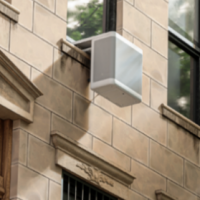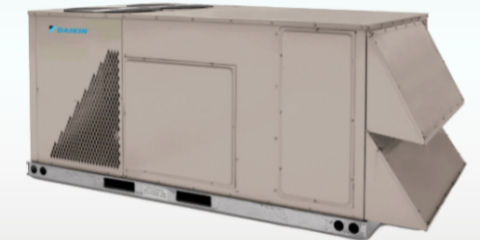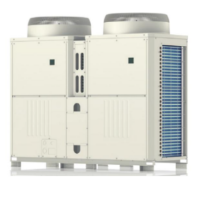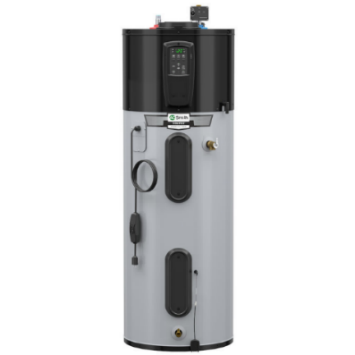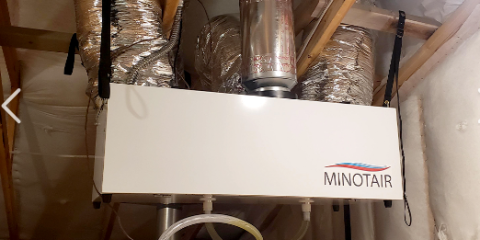

By Jeff Luoma | Wed, February 21, 24
States in the Northeast and Mid-Atlantic have established ambitious goals to reduce carbon emissions. A large slice of the reduction pie is to heat buildings and provide hot water efficiently with limited to no use of fossil fuels. Heat pumps have the capacity to do this – even in Northeast winters. There are now hundreds of options for cold climate heat pumps. Heat pump units have outsold gas furnaces in the US for the past two years, and several Northeast states have pledged to quadruple heat pump installations by 2030. However, most of these gains have been for space and water heating in single family homes. Multifamily and commercial building heat pump solutions are less mature and market awareness is still limited.
NEEP has released a new emerging technology brief to explain some of the newer and lesser-known applications of heat pumps for the residential and commercial market. NEEP already has an extensive heat pump listing and data of cold climate air source and ground source heat pumps as part of our regional Heating Electrification Initiative.
Here are short descriptions for each of the six categories we consider having promise as the “next wave” for heat pump technology. We’ve included a few advantages and challenges for each category.
Cold Climate “Micro” Heat Pumps
| “Micro” heat pumps are low-capacity 120-volt heat pumps. They can be easily installed and are designed to serve a single zone (one room or a small living space). Given the popular through-window configuration option, these units are sometimes referred to as window heat pumps. |
Example of Gradient window "saddle" unit. |
Commercial Packaged Heat Pumps (aka Rooftop Units)
| Rooftop Units with heat pumps are becoming increasingly available and popular nationwide. These may only have heat pumps for heating/cooling or may have a dual-fuel option for colder temperatures. HRV/ERVs (heat recovery/energy recovery ventilators) incorporated into rooftop units also show promise for significant energy savings. |
Daikin Maverick I |
Air-to-Water Heat Pumps for Space Heating
| For commercial and multifamily buildings, air-to-water heat pump systems can produce hot (or cold) water for hydronic distribution systems and possibly domestic hot water as well. Some emerging heat pump systems can produce water temperatures up to and over 180°F. |
Mitsubishi Ecodan CAHV Commercial ATW |
Central Heat Pump Water Heaters
| Central water heaters are common in larger multifamily and commercial buildings where they supply most or all the building’s domestic hot water needs. Temperature capacities can range from around 130°F to 170°F. Extra storage tanks are often employed for heat pump options to compensate for slower recharge times. Prefabricated and modular options allow for flexibility. |
Waterdrop System customizable module example with SanCO2 compressors |
120-Volt Heat Pump Water Heaters
| For multifamily and residential applications, plug-in 120-volt heat pump water heaters address some of the barriers that 240V heat pump water heaters face, such as higher upfront costs, installation costs, and electrical panel upgrades. These have potential as emergency replacements as well. |
A.O. Smith Voltex 120V Plug-in |
“Combi” Heat Pumps
| “Combi” units integrate HVAC systems into one package: heating, cooling, dehumidification, and ventilation. These are typically used in buildings with lower-than-normal heating and cooling loads, such as passive house construction. Applications include single and multifamily buildings. |
Minotair Heat Pump/Ventilation Unit |
Key Takeaways
- The Northeast/Mid-Atlantic region has aggressive emission reduction targets, including a focus on decarbonizing the building sector. Increased energy efficiency and electrification of key end uses, including space and water heating, provide critical pathways to building decarbonization.
- Electric heat pump solutions for space and water heating are readily available for single-family applications, with the market maturing quickly. Heat pump solutions for larger multifamily and commercial applications are less mature, and market awareness of these solutions is low.
- A series of emerging heat pump solutions are now available for larger multifamily and commercial applications, including technology suited for applications with low-temperature performance.
- Energy efficiency program administrators and policymakers should be evaluating these new solutions for inclusion in pilots and program offerings.
- Regional stakeholders should be collaborating on opportunities to develop these markets through coordinated market interventions.
